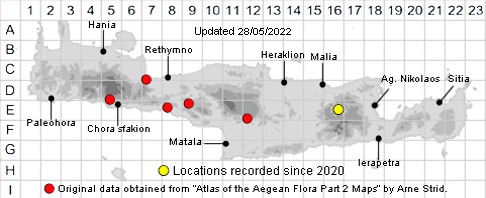
SPECIES DESCRIPTION
RUMEX CRISPUS
Family and Genus:- See- POLYGONACEAE/Subgen. RUMEX
Common Names:- None
Homotypic Synonyms:- None
Meaning:- Rumex (L) A name used by the Roman naturalist and philosopher Pliny
for sorrel.
Crispus (L) Curled, wrinkled, with a wavy or curled margin.
General description:- Usually perennial.
Stems:-
1) 30-150(-200) cm.
Leaves:-
1) Basal, 4-5 times as long as wide, narrowly lanceolate, acute, usually cuneate at
the base, margins undulate.
2) Petiole, canaliculate, usually shorter than the lamina.
Flowers:-
1) Inflorescence, branches, erect or ascending; lower whorls, usually remote.
2) Pedicels, 2-2½ times as long as the valves.
3) Valves, 3-6(-8) x 3-5(-7) mm, cordate, variable in outline and in the development
of the tubercles, more or less entire.
Fruit:-
1) Nutlet, obtusely trigonous.
Key features:-
1) Leaf-margin, undulate.
2) Petiole, canaliculate.
3) Tubercles, of the valves developing and hardening early.
Habitat:- Seasonally wet meadows and ruderal habitats, field margins, roadsides.
0-800 m.
Distribution:- Throughout Greece, but less common in the south. - probably native
to Europe and SW Asia, now almost a cosmopolitan weed. Rare on Crete currently
known for only a few scattered locations in the west.
Flowering time:- May-July.
Photos by:- Fotis Samaritakis
